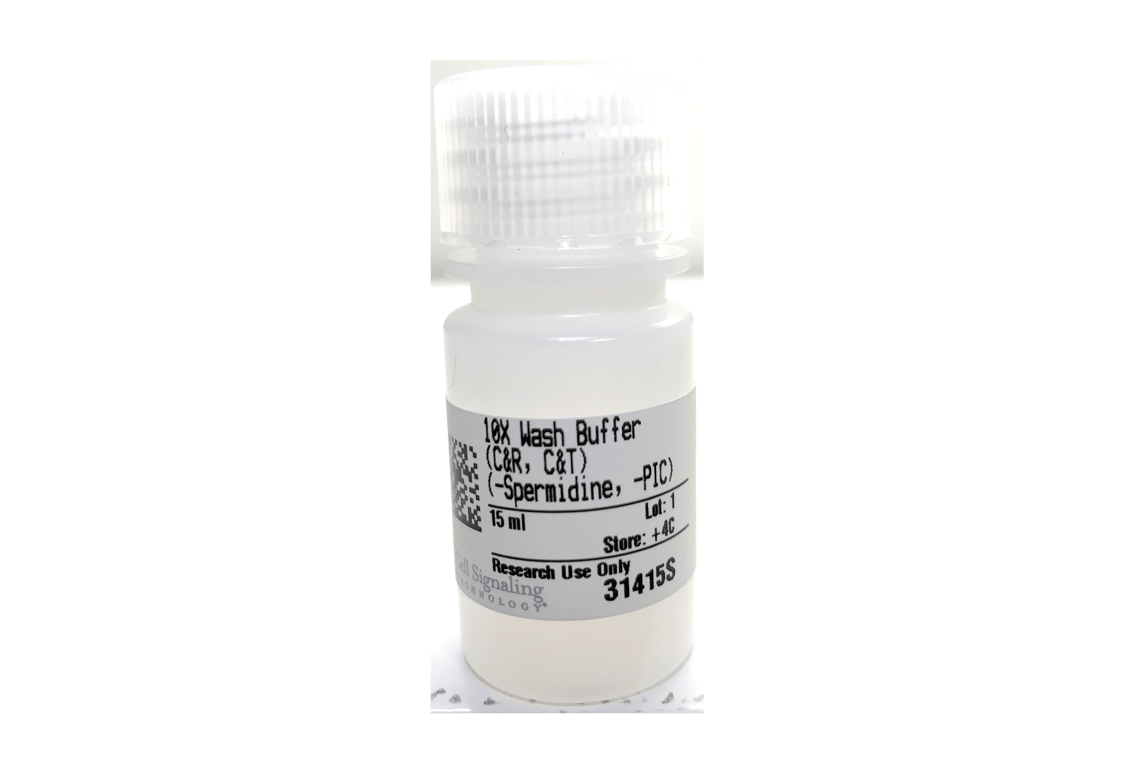Like the chromatin immunoprecipitation (ChIP) assay, Cleavage Under Targets and Release Using Nuclease (CUT&RUN) and Cleavage Under Targets and Tagmentation (CUT&Tag) are powerful and versatile techniques used for probing protein-DNA interactions within the natural chromatin context of the cell (1-7). CUT&RUN provides a rapid, robust, and true low cell number assay for detection of protein-DNA interactions in the cell. Unlike the ChIP assay, CUT&RUN is free from formaldehyde cross-linking, chromatin fragmentation, and immunoprecipitation, making it a much faster and more efficient method for enriching protein-DNA interactions and identifying target genes. CUT&RUN can be performed in less than one day, from live cells to purified DNA, and has been shown to work with as few as 500-1,000 cells per assay (1,2). Instead of fragmenting all of the cellular chromatin as done in ChIP, CUT&RUN utilizes an antibody-targeted digestion of chromatin, resulting in much lower background signal than seen in the ChIP assay. As a result, CUT&RUN requires only 1/10th the sequencing depth that is required for ChIP-seq assays (1,2). Finally, the inclusion of simple spike-in control DNA allows for accurate quantification and normalization of target-protein binding that is not possible with the ChIP method. This provides for effective normalization of signals between samples and between experiments. CUT&Tag has many of the same advantages as the CUT&RUN assay in that it provides a rapid, robust, and true low cell number protocol for detection of protein-DNA interactions in the cell. In addition, the CUT&Tag assay adds an in situ adaptor DNA ligation step carried out by the pAG-Tn5 enzyme, in which an adaptor DNA is ligated directly to antibody-targeted chromatin DNA fragments in the cell. As a result, subsequent DNA library preparation is much faster and easier than library preparation following the CUT&RUN assay, free from DNA end repair, A-tailing, and adaptor ligation in vitro. CUT&Tag works very well for analyzing histone modifications, in addition to mapping some transcription factors and cofactors binding.
1.Skene, P.J. and Henikoff, S. (2017) Elife 6, .
2.Skene, P.J. et al. (2018) Nat Protoc 13, 1006-1019.
3.Meers, M.P. et al. (2019) Elife 8, .
4.Meers, M.P. et al. (2019) Mol Cell 75, 562-575.e5.
5.Kaya-Okur, H.S. et al. (2019) Nat Commun 10, 1930.
6.Kaya-Okur, H.S. et al. (2020) Nat Protoc 15, 3264-3283.
7.Henikoff, S. et al. (2021) Bio Protoc 11, e4043.
 全部商品分类
全部商品分类

 下载产品说明书
下载产品说明书 下载COA
下载COA 下载SDS
下载SDS 用小程序,查商品更便捷
用小程序,查商品更便捷


 收藏
收藏
 对比
对比 咨询
咨询








